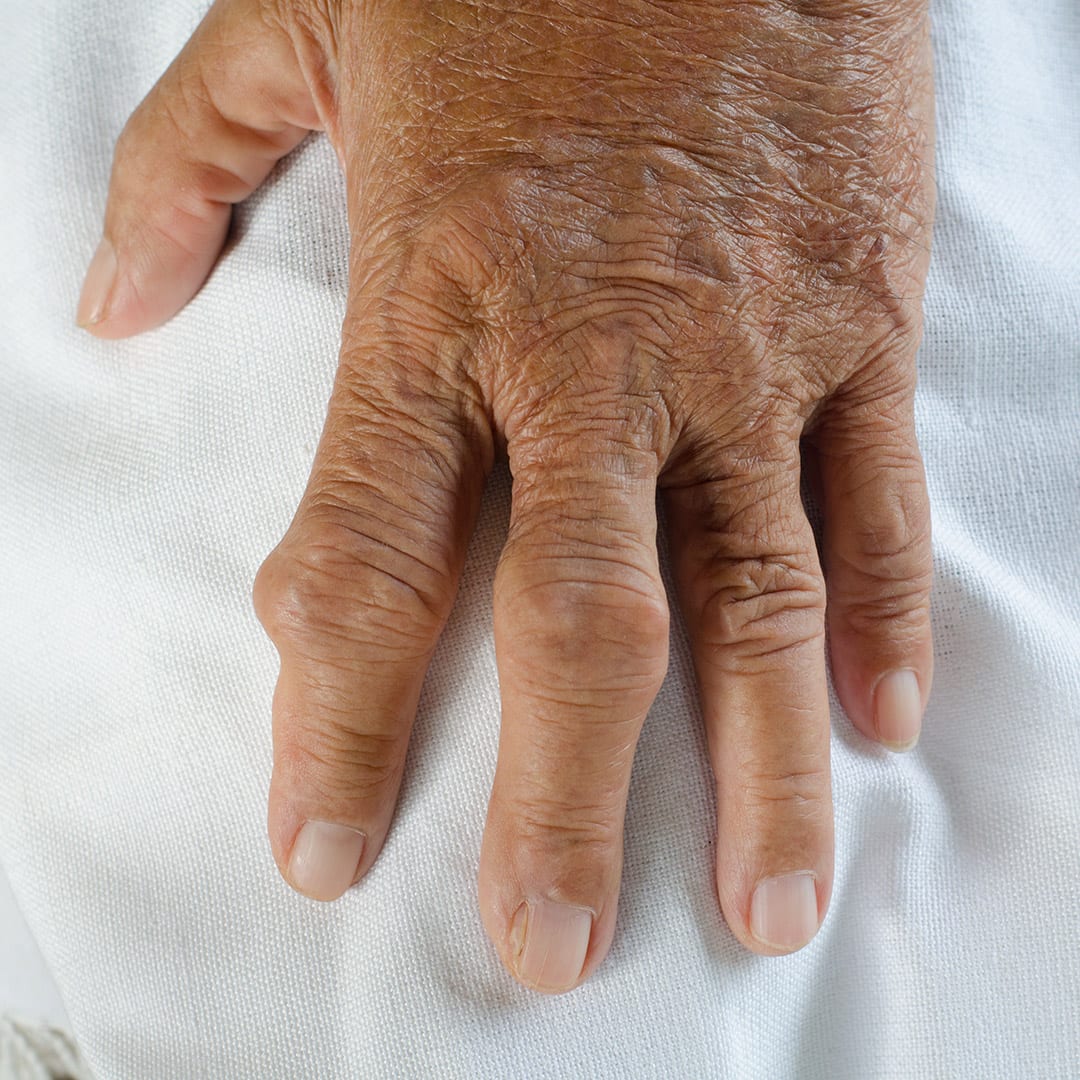What Causes Gout in the Hand?
Gout is a complex form of arthritis where crystals form, often in a joint, and can cause marked inflammation characterized by severe pain, redness, swelling and warmth. Frequently, this begins in the big toe, but patients can experience painful soreness from gout in the hand, too. In the hands, “The Gout” as many refer to it can affect not only the joints, but also soft tissues like the tendons. The most-impacted joint in the hand is often the middle joint (or knuckle) or the point at which the finger meets your hand. The joints suddenly become swollen, red and painful when the body produces too much uric acid. This byproduct of digesting some foods and drinks is normally carried through our blood to the kidneys and expelled in urine. For gout sufferers, however, the acid crystallizes in a joint, then is attacked by the immune system. An inability to properly modulate uric acid is genetic, but can be aggravated by certain medications meant to treat high blood pressure. Some flares in hand joints have been linked to previous injuries or surgery. Gout is also associated with a diet high in red meats, seafood or alcohol, obesity, high cholesterol, heart and kidney disease, insulin resistance and hypothyroidism.
How Is Gout in the Hand Diagnosed?
Symptoms of gout in the hand tend to arrive quickly, and may initially last 3 to 10 days. These episodes can be spaced apart by months, or even years. Additional joints may eventually be involved, and uric-acid crystals can also cause kidney stones. The condition is diagnosed with a combination of physical examination, lab testing and X-rays. Patients are also asked to give a complete medical history and medication list, since prescriptions and other ailments can lead to gout. Blood tests determine uric-acid levels, while also checking for other infections. Although most people who develop gout attacks will have elevated blood uric acid levels, this is not found in all gout sufferers.
How Is Gout in the Hand Treated?
Gout in the hand is relatively rare, and doesn’t usually require surgery. New cases – in particular if episodes are infrequent – are typically treated with a round of general non-steroidal anti-inflammatories, or a specific medication called colchicine. Steroids, either in pill or shot form, may also be required as the doctor works to decrease pain, swelling and redness. Patients are encouraged to get more regular exercise, and perhaps to lose weight. In many cases, dietary restrictions are recommended – and those changes are often sufficient for those with only mildly elevated levels of uric acid. A surgical procedure may be required for patients suffering more debilitating episodes of gout, or those who have associated damage to the joint and tendons due to crystal deposits.

Why Should Gout in the Hand be Treated?
Uncontrolled gout can lead to gouty tophi, when the crystals lump together. This can give the appearance of a mass under the skin. Uncontrolled gout can also lead to the destruction of not only the joint cartilage surface, but surround joints capsule, ligaments and tendons and even the skin.
Treatment for gout in the hand may require the assistance of a rheumatologist, a doctor that specializes in gout (as well as rheumatoid diseases) and placement on medicine to decrease the level of uric acid in the blood.

